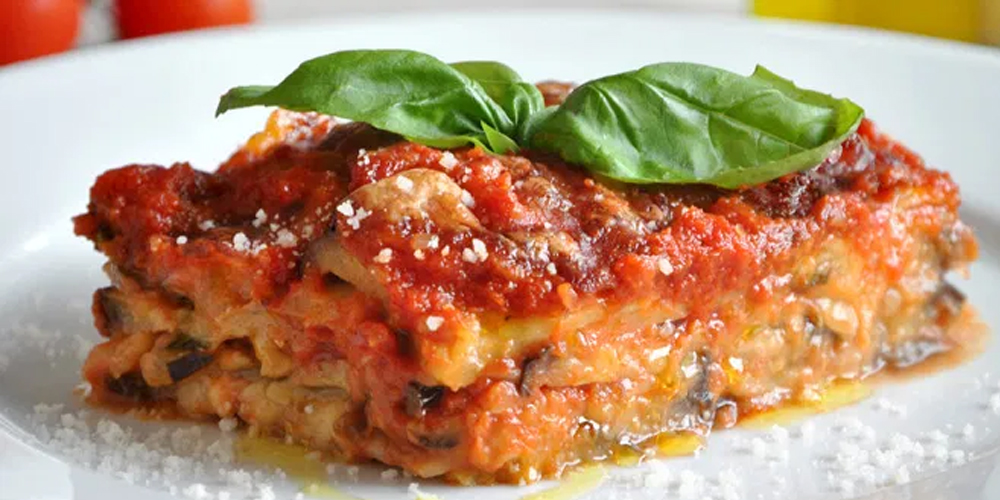The Neapolitan cuisine

The specialities that make up the Neapolitan cuisine are varied and all to try at least once. Wouldn't you like to spend the day among a pizza, a cuoppo, a rice sartù or a nice ragù, all seasoned with a sweet delicacy like a sfogliatella or a slice of pastiera with Vesuvius and the sea that surround you? You are in the right place!
The history of Neapolitan cuisine
Neapolitan cuisine has its origins in the various dominations that have populated the city for about 2000 years. Since the times of the Greeks and Romans, throughout the French and Spanish dominations, the Neapolitan cuisine has been enriched with specialities ranging from the most elaborate to the most popular ones.
A basic product dates back to ancient dominations, still widely used today, that is, the anchovy sauce from the bay of Cetara along the Amalfi coast, while it is in the Middle Ages that many recipes related to legumes and native vegetables date back. The success of pasta dates back to the sixteenth century since with the advent of poverty among the plebs and famines it was legitimate to make use of foods that could be preserved for a long time, transforming the Neapolitans from leaf-eaters to pasta eaters. During the Enlightenment and the French domination, the influence from beyond the Alps is very evident in the Neapolitan cuisine: the Neapolitan ragù, the potato gateau and the famous crocchè are born. In the nineteenth century, the gap between the bourgeoisie and the poor became wider, so much so that recipes reserved for the different classes began to be prepared, such as the octopus broth and the freselle soup typical of the Neapolitan suburbs. The birth of pizza as we know it today, with its various variations, can also be traced back to this period.
With the advent of globalization and major brands, traditional cuisine began to lose its appeal but then rediscovered it in the second half of the twentieth century thanks also to the value of the products that made up the famous Mediterranean diet, today a UNESCO heritage site.
The most popular recipes of Neapolitan cuisine
The Neapolitan ragù
The ragù is the undisputed king of the Neapolitan culinary Sunday. Unlike other national ragùs, Neapolitan ragù has its recipe which makes it a true masterpiece of traditional cuisine. It is a perfect combination of tomato and meat which, on a slow fire, mix and blend in a sacred and indissoluble sauce that never fails on Neapolitan Sunday.
Different types of meat are used, from the beef locena to the pork meat, which must cook on a low heat for about 6 hours, but the fundamental step is that the sauce must compulsorily peppiare, i.e. let it simmer. All surrounded with a basil leaf at the end of cooking and you're done.
The real Neapolitan pizza
The Neapolitan specialities, par excellence, is pizza in all its possible forms. From simple pizza Margherita with mozzarella and tomato to fried pizza full of delicacies, pizza is the emblem of the Neapolitan people in the world.
In every corner of Naples, you can not find a pizzeria from the historical to the more recent ones all offer a traditional pizza but with the addition of a particular staff that distinguishes it from all the others: from the use of ingredients for the preparation of the dough until the composition of the pizza itself.
Telling you to try typical pizza in Naples is almost obvious, so I can't help but recommend other recipes related to pizza in Naples such as escarole pizza or the so-called 'chiena' pizza
The eggplant parmigiana: a Neapolitan dish
The eggplant parmigiana is one of the typical specialities of Neapolitan cuisine. Often served as a side recipe, it embellishes Neapolitan Sunday. The base is the eggplants which are fried and then laid out on a bed of tomatoes sauce and so on for various layers interspersed with a level of fiordilatte which makes it compact and stringy.
The eggplant parmigiana is a must that you cannot do without.
The macaroni omelette
Fish dishes from Neapolitan cuisine
As a good seaside city, Naples also has its culinary specialities dedicated to the sea. The masterpieces of the cuisine that you cannot help but try are the sea cuoppo, in which you will find a mixture of fish specialities fried from squid to shrimp, and the peppered mussel, a mussel soup topped with lots of pepper and lemon.
But the most renowned speciality in the kitchen can only be the Luciana octopus. Born in the district of Santa Lucia, a stone's throw from the sea, the Luciana octopus is cooked in tomato sauce with the addition of capers and olives and can be served indifferently as a first course with spaghetti but also as a simple second course.
The dishes of Neapolitan cuisine during the holidays
In Naples, the holidays are deeply felt and this can only reverberate within the typical cuisine that has particular recipes depending on the holiday.
Christmas offers real binges in Naples. The Christmas dish par excellence is the eel, which in Naples becomes the capitone, fried together with the cod which with its strong aroma dominates the Neapolitan kitchens at Christmas. At Easter, however, the typical recipe is the casatiello. Dough is full of cold cuts and various cheeses on which fresh eggs are placed which will become hard during cooking.
The typical desserts of the Neapolitan cuisine
In Naples, a sector that often creates appeal is that of desserts. Neapolitan sweets are famous and desired all over the world. The most famous is the babà, king of the Neapolitan desserts, and its worthy queen, the sfogliatella in its curly and shortcrust forms. To these are added a string of various sweets that often bind to holidays such as Christmas struffoli or Easter pastiera.










Lascia un commento